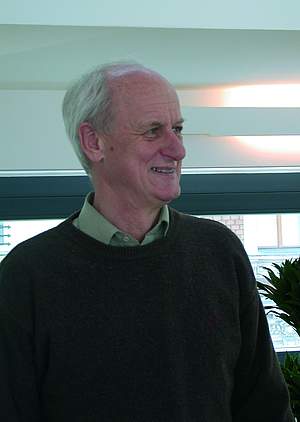Liaison and European Affairs Committee
It was important for the EFNS to develop friendly relations and good cooperation with a number of other organizations. To this end we created the Liaison committee. We distinguished between four different kinds of organizations with which to liaise: Subspecialty organizations within neurology such as European movement disorder society, related professional organizations such as Neuropathology, Neuroradiology etc., international organizations such as World Federation of Neurology, American Academy of Neurology etc. and finally organizations of allied health professionals such as specialist nurses, physiotherapists, speech therapists etc. Evelyn Sipido who had joined the EFNS staff took responsibility for the administration of this committee. She and several chairpersons worked hard during my presidency to create databases of organizations with which to collaborate and to establish formal relations with those organizations. We created rules for so-called associated organization but found out that other organizations were afraid of being dependent upon the EFNS. We therefore coined the name collaborating organizations. It proved difficult, however, to get going with any significant amount of collaboration. We suggested that these organizations should take out individual membership of the EFNS and thereby get all materials from the EFNS and use this to inform their members. The EFNS would do the same and this could guarantee a relatively high level of mutual information but it never really worked out. The most important result of these efforts was a formal collaboration between the European movement disorder society and the EFNS about having joint meetings at the EFNS congress every other year. This model has later been followed up. When I stepped down as president of the EFNS in 2001, I took on the chairmanship of the committee and found out myself how difficult it was to get any meaningful cooperation and to keep it going. At that time, I was heavily involved in the creation of the European Brain Council and it was decided that these activities would be the most important activities of the committee. Consequently it was renamed the Liaison and European affairs committee.
Chairpersons

It was important for the EFNS to develop friendly relations and good cooperation with a number of other organizations. To this end we created the Liaison committee. We distinguished between four different kinds of organizations with which to liaise: Subspecialty organizations within neurology such as European movement disorder society, related professional organizations such as Neuropathology, Neuroradiology etc., international organizations such as World Federation of Neurology, American Academy of Neurology etc. and finally organizations of allied health professionals such as specialist nurses, physiotherapists, speech therapists etc. Evelyn Sipido who had joined the EFNS staff took responsibility for the administration of this committee. She and several chairpersons worked hard during my presidency to create databases of organizations with which to collaborate and to establish formal relations with those organizations. We created rules for so-called associated organization but found out that other organizations were afraid of being dependent upon the EFNS. We therefore coined the name collaborating organizations. It proved difficult, however, to get going with any significant amount of collaboration. We suggested that these organizations should take out individual membership of the EFNS and thereby get all materials from the EFNS and use this to inform their members. The EFNS would do the same and this could guarantee a relatively high level of mutual information but it never really worked out. The most important result of these efforts was a formal collaboration between the European movement disorder society and the EFNS about having joint meetings at the EFNS congress every other year. This model has later been followed up. When I stepped down as president of the EFNS in 2001, I took on the chairmanship of the committee and found out myself how difficult it was to get any meaningful cooperation and to keep it going. At that time, I was heavily involved in the creation of the European Brain Council and it was decided that these activities would be the most important activities of the committee. Consequently it was renamed the Liaison and European affairs committee.